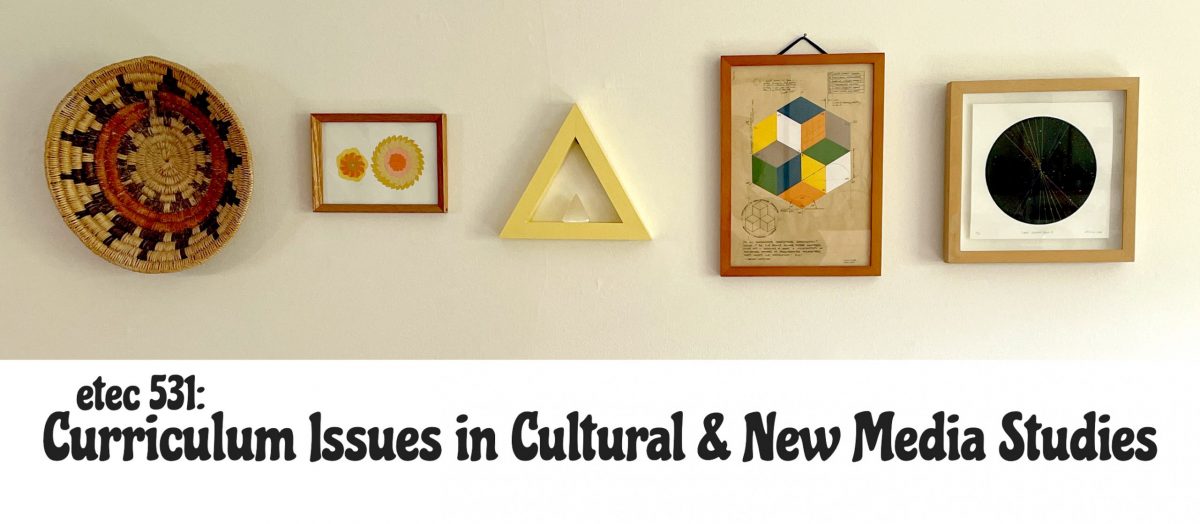Ruha Benjamin (2019) examines instances where human subjectivities permeate algorithmic artificial intelligence (AI). At first, this presents as surprising phenomena, but upon consideration, it only makes sense that an invention made by humans would be created through a subjective lens of understanding, and therefore through inherent biases. Benjamin extends this idea further, “they learn to speak the coded language of their human parents – not only programmers but all of us online who contribute to ‘naturally occurring’ datasets on which AI learn” (p. 62). Again, if we pause to critically think about AI and how it functions, this problem, although perhaps not explicit, is not hidden.
In his advocacy for critical media education, Buckingham (2019) explains the importance of applying logic and analysis to see beyond the surface and reminds us that critical thinking “requires us to look at what is included and excluded from the frame, and what the consequences of this might be” (p. 45). This sentiment asks us to take a closer look at the media and technology we engage with, and to consider whether our usage invokes implicit ethical implications, rather than blindly engaging with novel technologies.
The awareness of potential weaknesses embedded in technology should not result in educational practices that shy away or serve as a “prophylactic against [it]” (Buckingham, 2019, p. 52); this mindfulness should provoke educators to critically consider how they choose to integrate technology and new media to ensure they are used meaningfully rather than as superfluous gimmick. In conversation with Dr. Lori MacIntosh, Brandon Rodriguez, an Education Specialist with NASA, reflects on his experience educating throughout the COVID-19 pandemic. He shares methods for offline learning through basic experiments using household objects, rather than employing novel technology that further add to the excessive amount of screentime students were experiencing. He describes growing “alarmed by how many teachers were just shooting out options for technology,” (MacIntosh, n.d.) when the differences between various apps were insignificant and were likely obscuring educational outcomes that could be reached in simpler ways. It is not that Rodriquez chose not to use technology at all, rather, he chose to use it when it enhanced learning, and in balance with the realities of his students that may have challenges with access.
Another example of a balanced approach to integrating technology into education is illustrated by Champion, et al. (2020) through their in-person, hip hop-focused STEM camp. The camp’s design included an attention to the physicality of the space, availability of low-cost materials for DIY construction, instruction, and use of high-tech and analogue technologies for creating and re-mixing sound, and an application of curriculum design, that considered the interaction and collaboration amongst students. In this example, as well as with Rodriguez’s practices, new technology is not simply accepted as a panacea for educational obstacles, instead it is carefully integrated in ways that support hybrid learning environments.
References:
Benjamin, R. (2019). Race after technology: Abolitionist tools for the new jim code. Polity Press.
Buckingham, D. (2019). The media education manifesto. Polity.
Champion, D. N., Tucker-Raymond, E., Millner, A., Gravel, B., Wright, C. G., Likely, R., Allen-Handy, A. & Dandridge, T. M. (2020). (Designing for) learning computational STEM and arts integration in culturally sustaining learning ecologies. Information and Learning Sciences, 121(9/10), 785-804.
MacIntosh, L. (Host). (n.d.). Interview with Brandon Rodriguez, Education Specialist, Jet Propulsion Laboratory, NASA (No. 6) [Audio podcast]. University of British Columbia, in ETEC 531.
